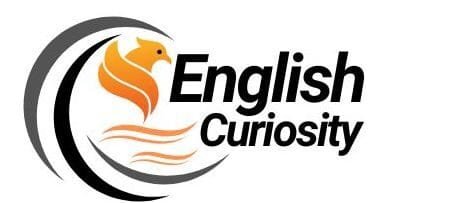2025 NTA UGC Net History Online Mock Test 36 held in India: 25 multiple-question answers from the history topic of the UGC NET Exam are given below.
NTA UGC Net History Online Mock Test 36
1. From which of the following months did the Mauryan fiscal year begin?
- (a) Phalgun (March)
- (b) Asadha (July)
- (c) Jyestha (June)
- (d) Pausa-Magha (January-February)
2. Which of the following supposed causes of decline and disintegration of the Mauryan Empire is the least likely?
- (a) Succession of weak kings after Asoka and the partition of the empire after Asoka
- (b) Military inactivity on account of Asoka’s pacifist policies
- (c) Brahmanical revolt against the pro-Buddhist policy of Asoka
- (d) Absence of national consciousness and representative institutions
3. Who of the following dedicated the caves in Nagarjuni Hills to the Ajivikas?
- (a) Kunala
- (b) Dasharatha
- (c) Samprati
- (d) Indrapalit
4. Which of the following was a measure adopted by the later Mauryas to meet the needs of a depleted treasury?
- (a) Increase in taxes
- (b) Imposition of new taxes
- (c) Debasement of currency
- (d) Increase of exports
5. How long did the entire Mauryan dynasty last according to the Puranas?
- (a) 218 years
- (b) 137 years
- (c) 85 years
- (d) 152 years
6. According to which of the following Asoka’s successor was Jalauka?
- (a) Buddhist tradition
- (b) Jain tradition
- (c) Matsya Purana
- (d) Kalhana’s Rajatarangini
7. Which of the following was not one of the reasons for gradual weakening of the Mauryan finances?
- (a) Need for vast revenues to maintain a huge but inactive army
- (b) Need for finances to maintain a very large bureaucracy
- (c) Unfavourable balance of trade with foreign countries
- (d) The strain on the exchequer of Asoka’s charitable public works
8. Who of the following was the last of the Mauryas, assassinated by his Commander-in-chief, Pushyamitra, the founder of the Shunga dynasty?
- (a) Samprati
- (b) Devavarman
- (c) Shatadhanvan
- (d) Brihadratha
9. Pushyamitra Sunga, who killed the last Mauryan ruler Brihadratha and founded the Sunga dynasty, was a:
- (a) Prime Minister of the Mauryas
- (b) General of the Mauryas
- (c) Both (a) and (b) above
- (d) Feudatory ruler
10. Which of the following statements about the legislative process during this period is not correct?
- (a) Legislation was largely a matter of confirming social usage
- (b) The king had a fairly free hand in taking decisions
- (c) Certain matters concerning professional ethics were regulated by the guilds
- (d) The king was expected to consult his ministers but the final decision lay with him alone
11. Which of the following statements about the Mauryan kings is not correct?
- (a) They had extensive powers encompassing administrative, judicial, and legislative functions
- (b) They laid claim to divinity
- (c) Appointments to the most important offices were made by the ruler himself
- (d) The king’s often laid down codes of regulation for the guidance of their officers and the people
12. The largest number of officers of the central administration were associated with the duties of:
- (a) Social welfare
- (b) Administration of justice
- (c) Public works
- (d) Revenue administration
13. Which of the following would be the most accurate description of the Mauryan monarchy under Ashoka?
- (a) Enlightened despotism
- (b) Centralised autocracy
- (c) Paternal despotism
- (d) Guided democracy
14. The Mauryan government was:
- (a) An autocracy
- (b) An absolute monarchy
- (c) A benevolent despotism
- (d) A centralised despotism
15. Which of the following statements about the Mauryan Council of Ministers (mantri-parishad) is not correct?
- (a) The members of the council were personally selected by the king
- (b) The number of members of the council was fixed and it consisted of three councillors and a Chief Minister
- (c) It was specially consulted in times of emergency
- (d) It may have acted as a political check on the king
16. Which of the following was not one of the checks on the powers of the Mauryan kings?
- (a) Customs of the land
- (b) Guilds
- (c) Brahmins
- (d) Mantri-parishad
17. The officer of the Central Government, who was in-charge of collection of revenue, was:
- (a) Adhyaksha or Superintendent of Departments
- (b) Sannidhata or High Treasurer
- (c) Samaharta or Collector General
- (d) Karmika or Clerk
18. Which of the following statements about anta-mahamatta is not correct?
- (a) These oficers worked among the frontier and less civilised tribes
- (b) They were responsible for acquainting the border people with the principles of dhamma
- (c) In times of emergency they worked as Wardens of Frontiers
- (d) It is quite likely that their duties included the collection of toll dues
19. Which of the following was not one of the departments administered by the Superintendents?
- (a) Store-house
- (b) Fisheries
- (c) Passport and prostitutes
- (d) Weights and measures
20. The officer of the central government, who was in-charge of the royal income or control of revenue, was:
- (a) Sannidhata
- (b) Karmika
- (c) Samaharta
- (d) Mahamatra
21. Who of the following officers were charged with superintendence of women?
- (a) Dhamma-mahamattas
- (b) Ithijhakha-mahamattas
- (c) Anta-mahamattas
- (d) Antahpur-adhyakshas
22. Which of the following authorities describes the offices of the Superintendents (adhyak-shas) of various departments and their duties?
- (a) Kautilya
- (b) Megasthenes
- (c) Arrian
- (d) Strabo
23. Which of the following statements about the new office of the dhamma-mahamattas introduced by Asoka in his fourteen regnal year is not correct?
- (a) They alone were responsible for the propagation of dhamma
- (b) They looked into complaints of law-abiding people and ensured fair treatment to them
- (c) They also attended to the welfare of prisoners and the inspection of the judiciary
- (d) They also looked after the interests of the urban men and merchants
24. Which of the following statements about the officers designated as mahamattas in the Mauryan administration is correct?
- (a) These officers were charged with the responsibility of propagating Buddhism
- (b) They were appointed as viceroys of various provinces
- (c) The term was used for any senior official irrespective of the duties assigned to him
- (d) It is a Prakrit expression for the Sanskrit word amatya
25. On the death of Asoka, the empire was probably divided into the western and eastern halves. Which of the following succeeded Asoka in the western half?
- (a) Kunala
- (b) Dasharatha
- (c) Samprati
- (d) Bandhupalit
1-b, 2-d, 3-b, 4-c, 5-b, 6-d, 7-c, 8-d, 9-b, 10-c, 11-b, 12-d, 13-c, 14-c, 15-b, 16-c, 17-c, 18-c, 19-b, 20-a, 21-b, 22-a, 23-a, 24-c, 25-a

